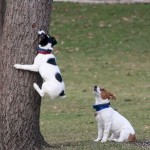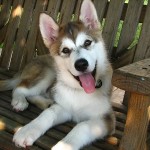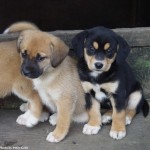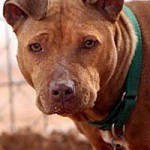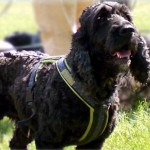Written by Senior Editor Peter Gehr
Let me tell you a story: My neighbor has an energetic Jack Russell who is so lively and active that he spends a lot of time bouncing like a ball next to his owner, Sandra, who works from home. Although Sandra takes Angus for a walk each day at the local park, she is unable to fully provide the amount of exercise for him, due to her work commitments and time restraints. I talked to her about the advantages of indoor training for her pooch, and I’ve compiled these top 10 tips on training your dog on a treadmill from the advice I offered Sandra.
To this day, Angus seems much happier and stimulated both physically and mentally from his time “at the home gym” and the treadmill has proven to be a great supplement to his existing exercise schedule.
Top 10 Tips on Training Your Dog on a Treadmill
1. Positive experience
It’s imperative to be sure you take the time to introduce your dog to the treadmill, and take it slowly. Dog Whisperer Cesar Millan suggests that you could even place your pets food or water on the platform to help make it a nice place to be.
2. Treats
Use his favorite treats to encourage him to step up onto the treadmill
3. Leash
Use a leash as an aid to guiding him from the back of the treadmill—which is where you’d approach it each time you use it.
4. Naturally uncomfortable, fearful
Please realize that this equipment and a “moving floor” will be completely unnatural and uncomfortable for your dog. Ensure that you have his full confidence and have him “in the zone” when on the machine. Avoid any fearful behavior so that it becomes an enjoyable experience.
5. Noise of machine
Introduce your pet to the sound of the machine, i.e. the beeps of the controls and the whirring of the treadmill in action, and reward him for his composure.
6. Steady the dog if anxious
Once your dog is comfortable with standing on the machine, at a low speed, introduce the treadmill with your pet on a leash and move him forward to the center of the platform. Steady him with your hands if necessary.
7. Repeat when successful
As soon as your pet has done well on the treadmill for a few short minutes, take him off and repeat the whole procedure to reinforce the “fun” aspect of the exercise.
8. Slowly introduce faster speeds
Do not force your dog, or expect him to trot or run on the machine. Take time to build up to comfortable and manageable speeds. You are not trying to train him for the Olympics, but rather introducing him to a steady and comfortable pace.
9. Do not leave your dog alone on the treadmill
NEVER leave your dog alone on any sort of equipment. Be sure you are close by to assure your pet, as well as being there to monitor progress.
10. Don’t overdo it
Build up to a reasonable time-frame of perhaps 15 to 20 minutes. Depending on the size of your dog, and the breed, you may want to come up with a standard that is appropriate and achievable for your pooch.
3 Dachshund Dogs on a Treadmill Having Fun!
The main reason for introducing a treadmill to your dog’s exercise regimen is to ensure that you are providing enough exercise for your pet. Let’s face it, unless you are very active and have the time to walk and run your dog at least once a day, then your dog will not be getting what he needs to stay healthy, fit, and mentally challenged.
You may be in a situation where a treadmill becomes an ideal way of giving your dog the necessary outlet for expending natural energy, and if you train your dog correctly, he will learn to like it and anticipate his exercise with enthusiasm. I hope these top 10 tips on training your dog on a treadmill benefit you and your pet.
Go ahead and click the LIKE button below and SHARE with your Facebook friends.

